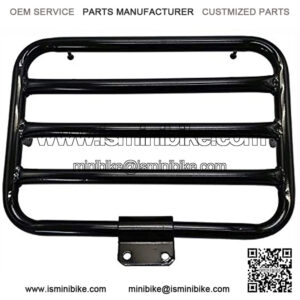Rear Rack
A rack provides a stable framework to hold gear on your bicycle. In good weather, items can be strapped directly to the rack without a cover. For foul weather or the ability to hold loose items together, bags such as rack trunks and panniers can be easily attached to the rear rack.
Rear racks are usually rated to carry loads between 20 and 50 pounds, which is sufficient for most uses. A few heavy-duty touring models are able to carry up to 80 pounds. These racks typically have three supports per side (others have only two).
Rear racks are designed to attach to the braze-on mounts that many bikes have. If your bike does not have braze-on mounts, you can still mount a rack using metal C clips included with the mounting hardware of most racks. These clips wrap around your bike’s frame tubes and accept the lower mounting bolt.
Front Rack
A front rack offers an additional mounting spot for gear. It is a secondary option after a rear rack as it adds weight to the bike’s front wheel and can affect steering and balance. Front racks are popular mostly with touring cyclists who carry large volumes of gear.
There are two primary styles of front racks:
A standard rack (also called a “top mount”) maximizes gear capacity as the load can be carried above the front wheel as well as hung off the sides.
A low rider rack accepts bags only on the sides but holds that weight closer to the ground for better balance.
As with rear racks, front racks are designed to attach to the braze-on mounts on your bike.
About mini bike rack
“mini bike rear rack”
“mini bike rear axle”
“mini bike rear end”
“mini bike rear axle bolt”


